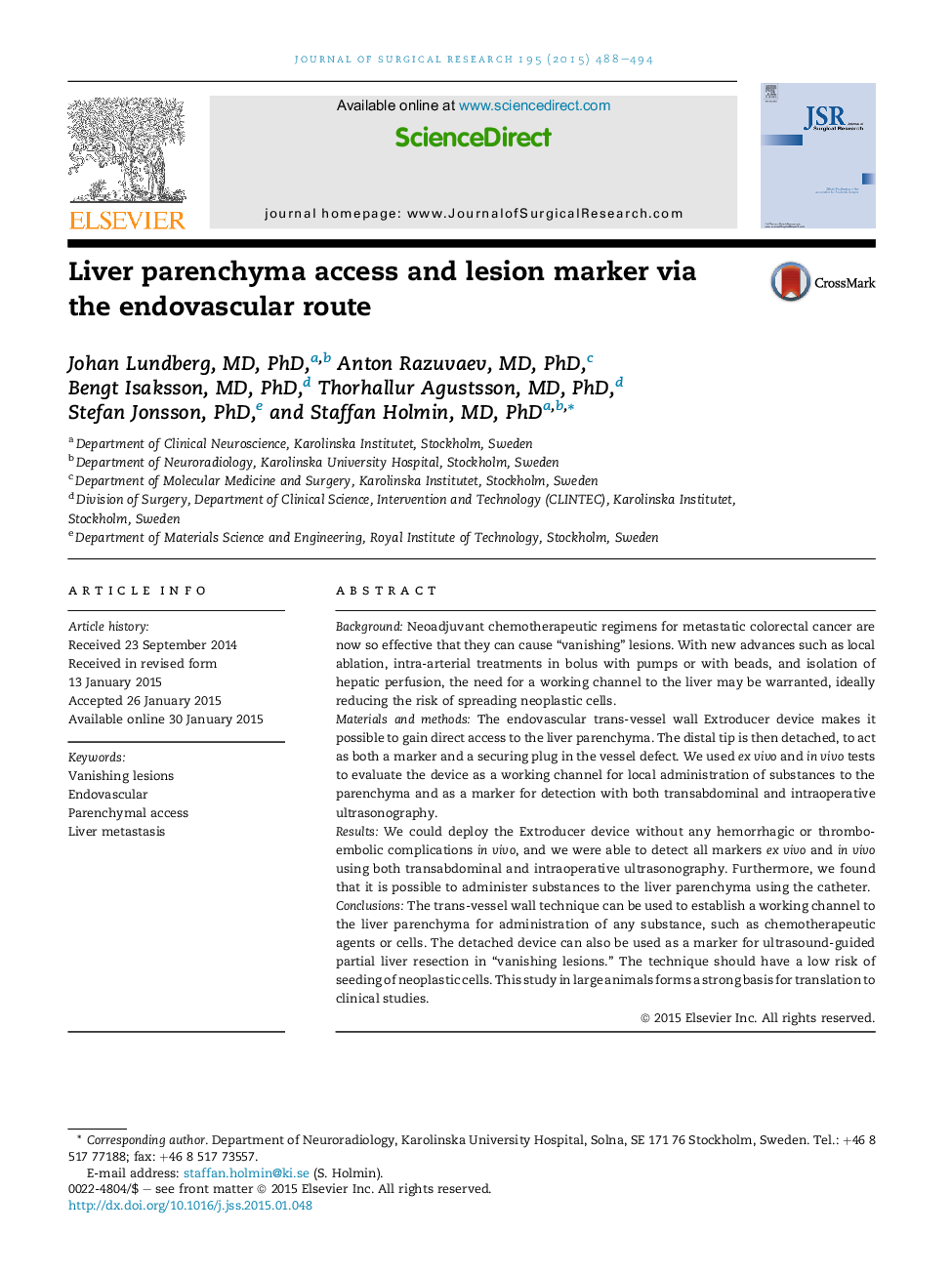| Article ID | Journal | Published Year | Pages | File Type |
|---|---|---|---|---|
| 4299680 | Journal of Surgical Research | 2015 | 7 Pages |
BackgroundNeoadjuvant chemotherapeutic regimens for metastatic colorectal cancer are now so effective that they can cause “vanishing” lesions. With new advances such as local ablation, intra-arterial treatments in bolus with pumps or with beads, and isolation of hepatic perfusion, the need for a working channel to the liver may be warranted, ideally reducing the risk of spreading neoplastic cells.Materials and methodsThe endovascular trans-vessel wall Extroducer device makes it possible to gain direct access to the liver parenchyma. The distal tip is then detached, to act as both a marker and a securing plug in the vessel defect. We used ex vivo and in vivo tests to evaluate the device as a working channel for local administration of substances to the parenchyma and as a marker for detection with both transabdominal and intraoperative ultrasonography.ResultsWe could deploy the Extroducer device without any hemorrhagic or thromboembolic complications in vivo, and we were able to detect all markers ex vivo and in vivo using both transabdominal and intraoperative ultrasonography. Furthermore, we found that it is possible to administer substances to the liver parenchyma using the catheter.ConclusionsThe trans-vessel wall technique can be used to establish a working channel to the liver parenchyma for administration of any substance, such as chemotherapeutic agents or cells. The detached device can also be used as a marker for ultrasound-guided partial liver resection in “vanishing lesions.” The technique should have a low risk of seeding of neoplastic cells. This study in large animals forms a strong basis for translation to clinical studies.
